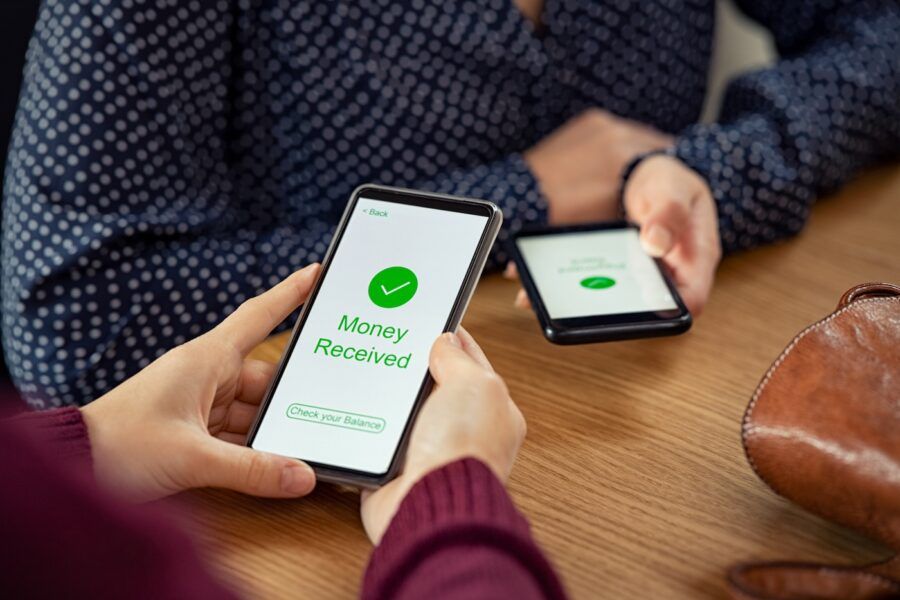In this article:
Banking apps are meant to simplify your financial life, but there are vulnerabilities to keep in mind. Some scammers develop fake banking apps designed to grab your personal or financial information and then commit fraud. Before you use a banking app like Venmo, Zelle or Cash App, be sure to verify that the app is legitimate.
Are There Fake Banking Apps?
Yes, unfortunately there are fake banking apps. These fake apps may appear to be from legitimate companies, but they are controlled by scammers who use them to gain access to your personal or financial information.
Due to the potential for fraud, it's vital to confirm you're downloading and using the official version of apps like Venmo, Zelle or Cash App. Be similarly cautious when installing and using banking apps from major financial institutions including banks and credit unions.
Stay alert to these tricks:
- Fake apps that install malicious software, also known as malware, on a smartphone or another electronic device. This software can steal sensitive information, such as account numbers. Or the software might hold your information hostage until you pay a ransom to the scammers.
- Fake apps that prompt you to log in through an email or social media account. Once you log in, a scammer may be able to swipe your personal or financial information.
How You Can Protect Yourself From P2P Scams
Here are some tips to protect yourself from P2P scams:
- Verify that the app is legitimate. For example, fake apps may have bad grammar or misspelled words in an app's description or on a website. A very low number of downloads and reviews could also signal that an app is phony. In addition, be sure to download apps only from trusted places, such as the App Store and Google Play.
- Be careful with permissions. Think twice before you give permission to an app or website to obtain credit card information, passwords and contacts.
- Look out for fake push notifications, emails and text messages that supposedly are from a provider of financial services. Be especially suspicious of alerts that have a sense of urgency and ask for your account information.
- Don't click strange links in texts and emails. If you spot a text or email on your phone that contains a link, don't click on it right away. Instead, be sure you're familiar with the sender, and look for messages that contain fraudulent URLs or don't display https:// at the beginning of the address. If you click on the link, a fraudster might be pulling you into a phishing scam aimed at nabbing your personal or financial information.
- Beef up device security. Look into installing an antivirus tool on your phone and other electronic devices. This software may be able to catch malware before it invades your device. In addition, make sure your device's operating system is up to date.
- Use multifactor authentication. This method of identity verification can make it tougher for a scammer to gain unauthorized access to a device or account.
What to Do if You're a Victim of Bank Account Fraud
Here are the steps you should follow if a fake app results in fraud involving your bank account:
- Contact your bank or credit union to report the fraud. You can also choose to have your financial institution close the bank account that was affected and open a new one.
- Report the fraud to the Federal Trade Commission (FTC). Reporting your case can help the government agency combat bank account fraud or other types of fraud.
- File an identity theft report with your local law enforcement agency. Bring any documentation you believe could help police build a case, including bank statements, app screenshots and other information.
- Place a free fraud alert on your credit reports. You have the right to place a fraud alert on your credit reports that asks creditors to verify your identity before opening an account in your name. You only need to contact one of the three major credit reporting agencies—Experian, TransUnion or Equifax—to set up a fraud alert with all three.
- Monitor your credit reports. Regularly check your credit reports to look for suspicious activity, such as an account being opened in your name without your permission.
- Understand your fraud liability. While federal laws offer better fraud liability protection for credit cards than debit cards, your debit card also provides fraud liability safeguards. For instance, many credit cards provide zero liability fraud protection, which means you won't be held responsible for unauthorized transactions.
Keep in mind that if a fraudster steals enough of your personal or financial information, they may apply for or successfully open a credit card account or sign up for a loan in your name. If this happens, you have the right to file disputes with the major credit reporting agencies and request to have the fraudulent information removed.
The Bottom Line
It's critical these days to tread carefully when you're downloading and using Venmo, Zelle, Cash App and other banking apps. Why? Because cyberthieves are creating fake apps engineered to steal your information and money. As part of your cybersecurity efforts, consider signing up for Experian's identity theft protection service to monitor your credit report and get alerts when suspicious information appears on your report.

